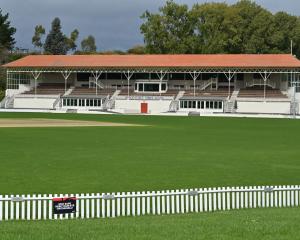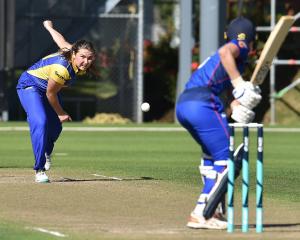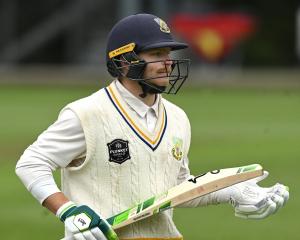The failure to televise the game also raises a deeper philosophical question: if a New Zealand cricket team plays overseas and no one at home can see it, what does making a World Cup final and going undefeated in a record seven test series really mean?
Is the problem a case of Cricket South Africa and their broadcasting partners being too greedy?
Or should Sky Television, with a net profit for the 2014 financial year up 21 per cent to $165.8 million, fork out?
Who should hold sway -- rightsholders, shareholders or subscribers?
New Zealand appear to have a post-World Cup middle-to-lower order batting problem in limited overs matches across the series
in England, Zimbabwe and now South Africa.
That might have emerged because of arguably the finest long-standing top order partnership in the country's history. Kane Williamson and Ross Taylor have combined for some terrific partnerships but, with Taylor and Corey Anderson absent through injury, yesterday morning's innings platform was dismantled by the South African bowlers in the final 7.4 overs.
New Zealand slumped from 102 for one to 151-8 -- a loss of seven wickets for 49 runs at a run rate of 6.4. South Africa cruised to the total with six wickets and 13 balls to spare.
Colin Munro (first-ball duck) and Luke Ronchi (five off nine balls) both face scrutiny but are also worthy of perseverance.
This tour gives Munro a prime chance to transfer his domestic form to the international stage but he's yet to take that opportunity after replacing Taylor in the starting XI.
Munro's 281 from 167 balls (including 23 sixes) for Auckland in their Plunket Shield match against Central Districts in March hint at his capability.
He scored 23 not out off 11 balls in a T20 game against Zimbabwe but in three other international appearances -- T20Is against England and South Africa and an ODI against Zimbabwe -- he has not reached double figures.
Since the start of the World Cup, Ronchi has passed 13 twice in 13 ODI innings and passed five once in three T20 internationals.
His role is less based on runs than strike rate but the latter has also dropped during that period from 123 to 115 (in ODIs) and 147 to 121 (in T20Is).
Few who saw his 170 off 99 balls in the world record sixth-wicket partnership with Grant Elliott in January will be prepared to write him off, but the clock is ticking for a resurgence.
Williamson (42 from 21 balls) was equal top scorer with Martin Guptill. While not pointing the finger at individuals, the captain identified batting in the latter overs as the key issue to improve.
"Credit has to go to the way South Africa bowled," said Williamson.
"We weren't at our best in the last 10 overs, which should have seen us get a more competitive total on a good batting surface.
"The ball came on and there wasn't a huge amount of movement other than with the new ball. Scoring 150 was not enough; it was a 180-run wicket.
"We know we have the firepower in the middle and lower order to cash in and we need to get on top of it. We lost two wickets in a row a couple of times which put the brakes on."
Hopefully by the start of the opening ODI on Wednesday, local New Zealand fans can tune in to make their own judgement.
By Andrew Alderson of the Herald on Sunday












